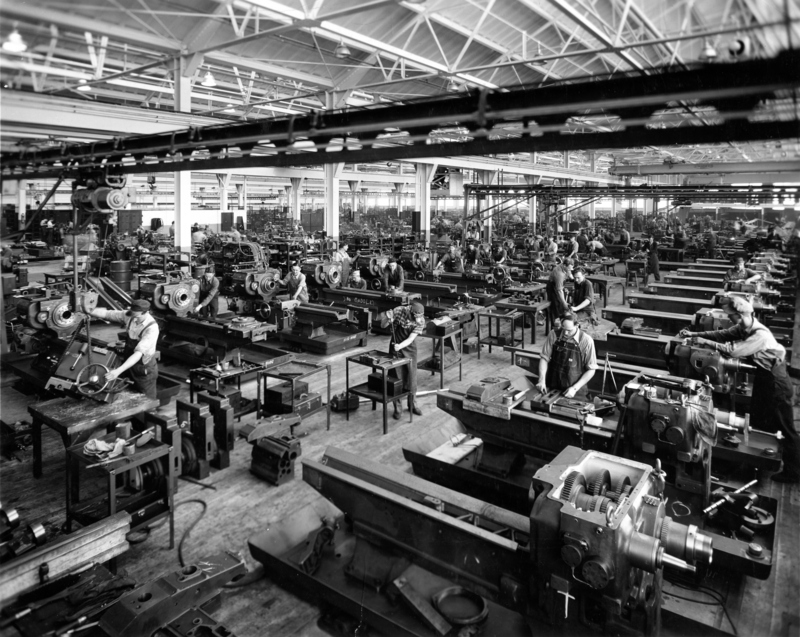
According to one website, it is one of Cleveland's most popular places for urban exploring. In a building where world wars were once won, young people now creep through dark hallways, clamber up rusted metal stairways, and walk carefully through debris-filled rooms.
Well, perhaps it's a bit of a stretch to say that wars were won in this building. But it is a fact that, in the long-vacant Warner & Swasey building at 5701 Carnegie Avenue, critical armament parts were once manufactured that helped the United States and its allies win two world wars during the twentieth century.
The five-story building made of reddish-brown stone was constructed over a six-year period from 1904 to 1910. It replaced the original Warner & Swasey building that had been erected on the site in the early 1880s. That was just shortly after Worcester Warner and Ambrose Swasey, two young New England machinists, had come to Cleveland to build a machine shop -- to Cleveland, because they thought Chicago was just too far west.
Warner & Swasey built telescopes and machine lathes in the new, as well as the old, building on Carnegie Avenue. And in wartime, when the company built those armament parts that helped America win two world wars, thousands of Clevelanders worked there. They built parts for tommy guns in World War I. And in World War II, when 7000 Clevelanders worked for Warner & Swasey, they built parts for planes, ships and tanks.
From World War I, through World War II, and into the 1950s and the 1960s, the building on Carnegie Avenue was one of Cleveland's most important work places. People talked about Warner & Swasey in the same breath and in the same way that they talked about the city's other big employers, like Republic Steel, TRW, and Ford Motors. But then the building on Carnegie Avenue began its downward slide, much like the City of Cleveland did in the same period. In the end it was a victim of high technology, and when it closed its doors for good in 1985, only a few hundred employees were still left to be sent elsewhere.
More than three decades have passed since Warner & Swasey left Cleveland. Its iconic early twentieth century industrial building is now owned by the City of Cleveland, which is looking to put it to a new use. In 1988, the County had considered the building as a possible site for its Department of Human Services and Child Support Enforcement Agency. That fell through. In 1992, Cleveland, which was deeded the building in the prior year, talked about making it the Charles V. Carr municipal center. It never happened. And in 2010 another proposal was put on the table. The Geis brothers, sons of German immigrants who came to Cleveland in the 1960s, proposed to convert the building into a high tech office, lab and manufacturing facility. We'll see. As of 2013, the year this story was written, their proposal has been pending for three years.
In the meantime, the Warner & Swasey building at 5701 Carnegie Avenue continues to awe the young urban explorers who visit it. In 2019, the buildng was added to the National Register of Historic Places.
Images








